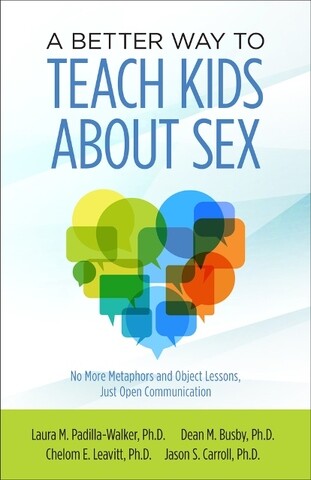Modesty is a tricky topic for many people in the Church. Sometimes it is a topic only taught to girls and it only focuses on dress. However, many parents have questioned that approach because we know that modesty is much more than the length of a dress or the way clothes fit. We also know that our boys need to be taught the importance of modesty as well. Modesty is not just about covering our bodies. Modesty really encompasses how we feel, think, and behave. So how can we as parents teach this deeper meaning of modesty to our young men and women?
► You'll also like:8 Ways to Teach Modesty Without Inflicting Shame or Judgment
It may help to understand the definitions of modesty: lack of pretentiousness (which is attempting to impress people with greater importance than we possess), a regard for decency, simplicity, and the act of showing reserve. When we describe a modest home, we are not describing whether the windows are “covered up” and whether the decorations are “revealing.” Instead we are describing an attitude of reserve and a lack of pretentiousness. The same attitude applies to personal modesty. Teaching our children to think, feel, and behave modestly requires that we have discussions of modest living as well as modest dress. Sister Carol F. McConkie reminded us: “Modesty is not vain or boastful. Modest people do not use their bodies or their behavior to seek approval from the world or to draw attention to their own real or supposed accomplishments or desirable attributes.”
Today’s culture barrages adults and children alike with anti-modesty messages. Modesty is not encouraged by society. In fact, our culture discourages modest thought, behavior, and dress. Self-effacement, humility, and unpretentiousness are not the traits taught in music videos, the business world, or at sporting events. At times, modesty may be mocked as an inability to be bold, stand out, or love ourselves. But modesty doesn’t mean being a goody-two-shoes or a doormat. When we teach that modesty includes our thoughts and behaviors as well as our dress, our children are better prepared to combat the never-ending emphasis on physical beauty, sexy appearance, and physical evaluations. As we remember that the Savior encouraged us to acknowledge our dependence on Him, it may be easier to maintain a feeling of modesty.
Sexual modesty is an antidote to many negative messages around us.
Let’s use a new term here to describe the opposite of our current culture: sexual modesty. Sexual modesty is based on the idea that the part of ourselves that is sexual, including how we look, act, and feel that draws attention to our sexuality and stimulates sexual thoughts in ourselves and others, is only reserved for our spouse or future spouse. Parents can teach children that when we hold this part of ourselves sacred it strengthens our understanding of our divinity and increases holiness.
In this way, modesty and sexuality combine to have greater power to bond and hold together future marriage, because it is reserved for marriage. Our modesty and sexuality are intricately intertwined because one, modesty, sets the boundaries around the other, sexuality. In this way, sexuality becomes synonymous with only one relationship, one other person, one covenant. Modesty then is like the invisible force field that surrounds our sexuality, keeping inside what belongs inside and rejecting everything else, which should stay outside. Sexual modesty is the exact opposite of exhibitionism or voyeurism.
► You'll also like: The Dangers of Using Metaphors When Teaching Youth About Sexuality (+ What We Can Do Instead)
Our world is saturated with exhibitionist images, text, and programs that stimulate the voyeuristic parts of people. Exhibitionism occurs when we expose sacred and private parts of ourselves such as our bodies, our sexual experiences, or our lives for the purpose of gaining attention. Voyeurism is viewing exhibitionistic portrayals as a form of entertainment. Our baser selves can be attracted to private, sensitive, sexual material that others are willing to portray in the media or in our social circles.
This is why some of the most popular shows are “reality” shows that are based on people who are willing to be exhibitionists by drawing in viewers who are voyeuristic. Even less sexualized media forms, such as Facebook or Instagram, may encourage us to focus on ourselves and compare our appearance, accomplishments, and relationships to others. We begin to focus on the smallest details in our lives and lose sight of more important changes we need to address, like forgiveness or gentleness. Social media makes it all too easy to chat or post something that boasts about successes or reveals parts of our lives or our bodies that should remain private.
Both young men and young women may need some counsel and guidance about what is modest behavior on social media outlets. As our culture changes and we are surrounded by these types of behaviors and practices, it is difficult to remember that central to the healthy practice of sexuality, and even relationship development, is the concept of privacy. We are not private because we are prudes or insecure. We are private because certain aspects of ourselves are only shared with our spouses, and the more we honor these boundaries around our current or future marriages, the more these relationships can stay exclusive. This is absolutely necessary for the building of trust. This is the essence of sexual modesty.
Sexual modesty teaches that sexual images or thoughts of someone outside of the marriage should not be allowed to penetrate the marriage. When we understand modesty in this way, we can see the need to emphasize modesty to both our young men and young women. As parents teach their children about sexual modesty, other messages easily follow: a modest person would not provocatively dress, speak, or act in any way that drew attention to their sexuality and body except within the private space of marriage.
Modesty is not about controlling others’ behavior.
Young women are not responsible for the thoughts of young men. This is an important point, as some people unintentionally or carelessly imply that if young women are immodest in dress, they hold some blame for young men’s sexual thoughts. However, we are each responsible for our own thoughts and actions. Young women also feel sexual attraction, and when boys draw attention to their bodies by the way they dress or act, young women are equally capable of struggling with heightened arousal.
Our children can find strength in having those with similar values around them, but we must never fall into the trap of blaming others. Cultivating the Spirit is the antidote to impure thought. We can teach our young men and women to be more mindful about how they dress and behave. We can visit with our children about how their dress and behavior may impact their ability to feel the Spirit. Modest thought and behavior are important guards of our spiritual, physical, and emotional security. Modesty adds a protective layer between us and the enemy of our soul.
We need to teach our young men and women that they alone determine their thoughts. If young men have inappropriate thoughts because of how a girl is dressed, like Joseph of Egypt who “fled, and got him out” (Genesis 39:12), they alone are responsible for their thoughts and behaviors. Joseph developed into a strong spiritual man by taking personal responsibility for his thoughts and behaviors.
► You'll also like: What We're Often Missing When We Teach Youth About Sexual Intimacy, Modesty, and Virtue
When blame is transferred to young women for the inappropriate thoughts or behaviors of young men, we undermine the principles of personal responsibility and agency. Of course, we have seen both young men and young women encourage inappropriate thoughts and behavior. We know that negative influences are out there. But transferring blame does not strengthen our children. As parents we can help our children by frankly addressing modesty. If girls are dressed provocatively, parents can talk with their boys about how to avoid being around that kind of temptation without making others feel judged or shameful. No doubt, both boys and girls are responsible for their own thoughts, but youth who embrace modesty will lift all those around them.
Image from Shutterstock
To learn more about teaching youth about sexuality in a way that is healthy and doctrinally sound, check out A Better Way to Teach Kids About Sex, available at Deseret Book stores and deseretbook.com.
For generations, parents and leaders have had the best of intentions when teaching children and youth about sexuality and the law of chastity. Despite meaning well, many parents have lacked the essential tools and knowledge needed to arm their children to navigate their own sexuality and prepare for a marriage that includes a healthy and joyous view of sexual wholeness.
This guide for parents is a scientifically informed LDS perspective on how to talk with children in an open and faith-based way to help them build a foundation of communication and trust, understand the physical body, and gain a healthy approach to sexual wholeness.


